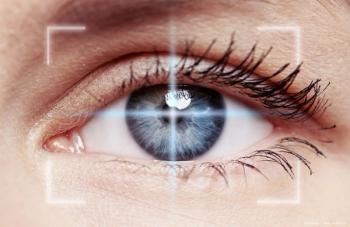
- Ophthalmology Times: September/October 2025
- Volume 50
- Issue 5
Ocular surface: Targeted therapies for a multifactorial problem
Key Takeaways
- Early and aggressive treatment of dry eye disease can prevent progression and preserve ocular health, especially in glaucoma patients.
- A multifaceted approach is necessary for managing meibomian gland dysfunction and aqueous deficiency, utilizing various therapies.
Real-world insights emphasize identifying underlying causes to tailor treatment.
I began treating the ocular surface many years ago because I saw so many patients with glaucoma who were using topical medications with preservatives that compromised their goblet cells and damaged their meibomian glands, ultimately undermining their adherence to therapy. Many of these patients needed trabeculectomy or tube shunt surgery, the outcomes of which can hinge on a healthy ocular surface.1 Treating dry eye is also essential to getting the correct preoperative measurements for patients with cataract and refractive errors.2
Because dry eye disease is multifactorial, no single treatment works, but that does not mean treatment has to be complicated or consume too much chair time. Once diagnostics are complete and the patient has been examined, the next step is to create a treatment plan from a set of preferred, targeted therapies.
Assembling a treatment plan
Treating dry eye early and aggressively provides the best chance to prevent it from progressing to apoptosis and permanently losing goblet cells and meibomian glands.3 Unfortunately, many of my patients have gone years without effective treatment. Most patients referred to me for surgery have dry eye: about 70% have meibomian gland dysfunction (MGD), sometimes combined with aqueous deficiency, as well as aqueous deficiency alone. MGD and aqueous deficiency require a multifaceted approach, whether they occur alone or together.
MGD
Whenpatients have an unstable tear film, a quick tear breakup time, fluctuating vision, and little meibum to express, but they still have an adequate tear lake, the problem is MGD.4 Clinicians can focus on improving the lipid layer composition as follows:
Eyelid care: For eyelid care, hygiene is essential, using preservative-free lid scrub options such as foams (ZocuFoam; Zocular) or convenient individual wipes (iVizia Micellar Eyelid Cleansing Wipes; Thea Pharma Inc). I also recommend antimicrobial hypochlorous sprays, including products from Avenova Eyecare and Optase. Where there is evidence of Demodex blepharitis overpopulation, I prescribe lotilaner ophthalmic solution 0.25% (Xdemvy; Tarsus Pharmaceuticals, Inc) twice a day for 6 weeks. Patients also need to use a warm compress mask to help thin and release meibum.
Prescription: I often prescribe an eye drop that forms a layer to prevent evaporation (Miebo; Bausch & Lomb Americas Inc).5
Heat treatment and IPL: For thick meibum or blocked glands, in-office treatment with a heat device (TearCare, Sight Sciences; Lipiflow, Johnson & Johnson Vision) releases lipids into the tear film.6,7 Warm compresses extend the results. I have recently begun using intense pulsed light (IPL) therapy for ocular rosacea, including red-looking vessels along the lash line.7 Heat devices and IPL can make an effective combination when needed.
Preservative-free artificial tears: I have patients use certain preservative-free artificial tears (iVizia; Thea Pharma Inc), my preferred tear for both MGD and aqueous deficiency, for its comfort, ease of use, and lasting hydration.8
Aqueous deficiency
Some patients have red, bone-dry eyes with decreased tear meniscus (tear lake at the lower lids).9 They are often in pain. Meibography and gland secretions look normal, ruling out MGD. These patients have mainly aqueous deficiency, and they usually fit the risk profiles (autoimmune disease, postmenopausal, and/or taking medications for hypertension, allergy, or depression).9 Several treatment options exist, including the following:
Steroid-immunomodulator combination: When eyes are painful and red, inflammation is the primary contributing factor to decreased tear production.10 I prescribe the combination of a steroid and an immunomodulator eye drop. A short-term loteprednol drop calms the inflammation, and then patients start Xiidra (Bausch & Lomb Americas Inc), Cequa (Sun Pharmaceutical Industries, Inc), Vevye (Harrow Eye, LLC), or Restasis (AbbVie Inc) to manage the inflammatory cascade long-term.
Punctal/lacrimal system occlusion: To retain the limited tear volume on the ocular surface, I have begun using a hyaluronic acid gel formulation that is injected into the lacrimal canaliculi to decrease the tear evacuation (Lacrifill Canalicular Gel; Nordic Pharma, Inc). Punctal plugs are a good option as well.
Preservative-free artificial tears: Patients with aqueous-deficient eyes start using preservative-free artificial tears morning and night, and as needed. I prefer a povidone eye drop (iVizia) over other artificial tears because I see it helping to improve the status of aqueous-deficient eyes. Patients also like the convenient bottle and because it is preservative free, they can use it as often as they need.
MGD and aqueous deficiency
Most of my patients with dry eye have a mix of MGD and aqueous deficiency. They need a combination of therapies, selected based on the severity of each problem, the patient’s comfort and convenience, and the compatibility of various MGD and aqueous-deficiency therapies. For example, for a patient with blocked glands and moderate aqueous deficiency, I might try an in-office heat treatment, followed by a warm compress mask, eyelid hygiene, an immunomodulator, and preservative-free artificial tears, adding punctal plugs if needed. Neuromodulators are another good option for these patients.
Neuromodulators: Neuromodulators trigger the production of natural tears. For example, nasal spray (Tyrvaya; Viatris/Oyster Point Pharma, Inc) stimulates the trigeminal nerve in the nose, which tells the lacrimal functional unit (LFU) to stimulate the meibomian glands, goblet cells, and lacrimal gland, along with a complex neural network to produce healthy, complex tears (not watery reflex tears).11 Recently, the FDA approved acoltremon ophthalmic solution 0.003% (Tryptyr; Alcon Laboratories, Inc) as the first topical eye drop neuromodulator.12 It stimulates the TRPM8 receptor on the surface. These receptors (cold receptors) activate trigeminal nerve signaling to enhance natural tear production via the LFU. Because these neuromodulators stimulate multiple glands, they address both MGD and aqueous deficiency and do not compete with other dry eye therapies.
Case study: A patient with glaucoma with complex ocular surface disease
A 62-year-old woman referred for evaluation of moderate primary open-angle glaucoma had been using topical generic latanoprost, combination dorzolamide-timolol drops, and OTC generic artificial tears. Her IOP was fluctuating in the upper teens to low 20s, several points above target (middle teens). The drops made her eyes red, and she said she sometimes missed applying them when she was busy. Her vision fluctuated upon blinking, and her eyes began watering after reading for 5 minutes, suggesting a poor tear film.
Testing and exam
Examination revealed 1+ MGD with telangiectatic vessels of the eyelid margin, lightly decreased tear lake, central corneal staining, elevated tear osmolarity, and a 2+ nuclear sclerotic cataract with cortical changes. The cup to disc ratio was 0.55 in both eyes, with central corneal thickness in the 550-μm range and corneal hysteresis of 10 in both eyes. Visual field testing demonstrated a nasal step but healthy vision in the central 10°.
Glaucoma and OSD treatment
Due to poor adherence by the patient and the presence of ocular surface disease (OSD) signs and symptoms, selective laser trabeculoplasty (SLT) was selected to reduce the burden of topical eye drops. Following SLT, topical glaucoma medications were discontinued. Intracameral bimatoprost (Durysta; AbbVie Inc) was administered, and preservative-free artificial tears (iVizia) were initiated to address OSD. Tyrvaya was initiated to help stimulate the LFU and improve natural tear production. The patient’s IOPs were good, and her dry eye symptoms, osmolarity, staining, and eyelid margin vessels all improved.
Advanced OSD treatment
A few months later, with topical glaucoma medication out of the equation and the IOPs looking good, I could reevaluate the patient’s OSD. The ocular surface had improved, but she still noticed some fluctuating vision after reading and difficulty watching TV. An imaging platform (Ommicad; Lumibird Medical) showed a decreased lipid layer, good meibomian gland density, poor blink closure, and a low tear lake. The patient had a combination of MGD and aqueous deficiency. The following treatment regimen was initiated: Miebo was added 4 times daily, Lacrifill was inserted, and hypochlorous spray and heat mask therapy were started. We discussed the potential use of IPL and TearCare for the future, with the possible addition of an immunomodulator to address downstream inflammation if needed. Continuation of iVizia artificial tears as needed was maintained.
The patient’s signs and symptoms of dry eye improved significantly, making it easier for her to read and watch TV. Later, when she needed cataract surgery, intracameral travoprost and 3 iStents (iDose TR; Glaukos Corp) were implanted. Due to stable, reliable biometry and topography results, she was a candidate for a toric IOL. The patient is doing well, with 0 glaucoma drops, stable 20/20 vision, and no redness. She continues to use Miebo and iVizia as needed, and reports that her eyes feel comfortable.
Multiple tools are often necessary to address the multifactorial nature of OSD. Fortunately, this patient’s health, vision, and overall quality of life significantly improved.
Inder Paul Singh, MD
E: [email protected]
Singh is the president of The Eye Centers of Racine and Kenosha, a glaucoma specialist, and a cataract and refractive surgeon. He has no relevant
disclosures.
References:
Wong JKW, Leung TK, Lai JSM, Chan JCH. Evaluation of adverse effects of topical glaucoma medications on trabeculectomy outcomes using the glaucoma medications intensity index. Ophthalmol Ther. 2022;11(1):387-401. doi:10.1007/s40123-021-00447-x
Donaldson K, Parkhurst G, Saenz B, Whitley W, Williamson B, Hovanesian J. Call to action: treating dry eye disease and setting the foundation for successful surgery.
J Cataract Refract Surg. 2022;48(5):623-629. doi:10.1097/j.jcrs.0000000000000844Baudouin C, Messmer EM, Aragona P, et al. Revisiting the vicious circle of dry eye disease: a focus on the pathophysiology of meibomian gland dysfunction. Br J Ophthalmol. 2016;100(3):300-306. doi:10.1136/bjophthalmol-2015-307415
Kaur K, Stokkermans TJ. Meibomian gland disease. [Updated 2024 Mar 3]. In: StatPearls. StatPearls Publishing; 2025-. Updated March 3, 2024. Accessed August 25, 2025.
https://www.ncbi.nlm.nih.gov/books/NBK580474/ Zhuang-Yan A, Syed YY. Perfluorohexyloctane ophthalmic solution: a review in dry eye disease. Drugs. 2024;84(4):441-448. doi:10.1007/s40265-024-02016-5
Ayres BD, Bloomenstein MR, Loh J, et al. Improved signs and symptoms of dry eye disease for Restasispatients following a single Tearcaretreatment: phase 2 of the SAHARA study. Clin Ophthalmol. 2024;18:1525-1534. doi:10.2147/OPTH.S464379
Toyos R, Desai NR, Toyos M, Dell SJ. Intense pulsed light improves signs and symptoms of dry eye disease due to meibomian gland dysfunction: a randomized controlled study. PLoS One. 2022;17(6):e0270268. doi:10.1371/journal.pone.0270268
Théa’s iVizia line provides up to eight hours of dry eye relief. Chain Drug Review. 2024;46(14):19. Accessed August 25, 2025. http://digitaledition.chaindrugreview.com/article/Th%C3%A9a%E2%80%99s+iVizia+line+provides+up+to+eight+hours+of+dry+eye+relief/4887022/835813/article.html
Wolffsohn JS, Arita R, Chalmers R, et al. TFOS DEWS II Diagnostic Methodology report. Ocul Surf. 2017;15(3):539-574. doi:10.1016/j.jtos.2017.05.001
Rao SK, Mohan R, Gokhale N, Matalia H, Mehta P. Inflammation and dry eye disease-where are we? Int J Ophthalmol. 2022;15(5):820-827. doi:10.18240/ijo.2022.05.20
Frampton JE. Varenicline solution nasal spray: a review in dry eye disease. Drugs. 2022;82(14):1481-1488. doi:10.1007/s40265-022-01782-4
Alcon announces FDA approval of TRYPTYR (acoltremon ophthalmic solution) 0.003% for the treatment of the signs and symptoms of dry eye disease. News release. Alcon. May 28, 2025. Accessed September 9, 2025. https://www.alcon.com/media-release/alcon-announces-fda-approval-tryptyr-acoltremon-ophthalmic-solution-0003-treatment/
Articles in this issue
about 1 month ago
Transformative advances in vision research: It’s the scienceabout 1 month ago
Anti-VEGF innovations in retinal disease: From molecules to medicineabout 1 month ago
From numbers to meaning: Graphical reporting in refractive surgeryabout 1 month ago
Evolving glaucoma therapy: A new era of interventional strategiesabout 1 month ago
Proactive strategies and sustained delivery advance glaucoma careabout 1 month ago
Periorbital rejuvenation: Past, present, and nextabout 2 months ago
The mechanics of presbyopia: From muscle movement to functional visionabout 2 months ago
Rethinking punctal occlusion as an option for allergic conjunctivitisNewsletter
Don’t miss out—get Ophthalmology Times updates on the latest clinical advancements and expert interviews, straight to your inbox.
















































.png)


